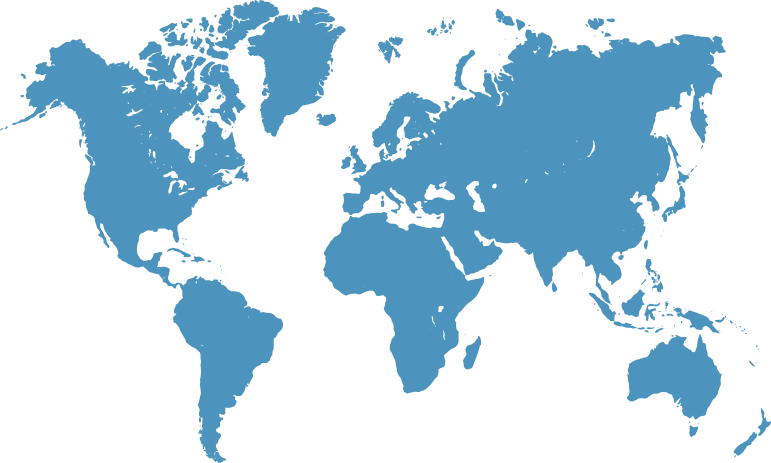
Biodiversity strategy
Reducing your organisation’s impact and acting positively on biodiversity is necessary to halt our ecosystems’ decline.
At EcoAct we are driven by a desire to make a difference. To help businesses to implement positive change in response to climate & environmental challenges, whilst also driving commercial performance.
puestos de trabajo equivalentes creados en países en vías de desarrollo
invertidos en comunidades locales
expertos internacionales
In 2019, the Intergovernmental Science-Policy Platform on Biodiversity and Ecosystem Services (IPBES) published an inspiring report on the state of biodiversity in the world. It acknowledged that nature and its vital contributions to human society are being deteriorated at a global level due to direct (land use, exploitation, pollution, etc.) and indirect (demographic changes, conflicts, epidemics, etc.) human pressures on the environment.
Like climate change, biodiversity decline will have devastating effects for people and for businesses. There has been growing awareness of this topic for several years now, and has encouraged private and public actors to commit to reducing their impact on nature.
This is why EcoAct has gotten involved in several international initiatives. Since 2021, we are a member of the B4B+ Club (Business for Biodiversity Positive) of the CDC Biodiversity, which aims to develop a methodology aligned with all current initiatives (SBTN, CDP, Align, TNFD…) for measuring companies’ biodiversity footprint: the Global Biodiversity Score (GBS).
We have also joined the European research project CircHive, which aims to standardise biodiversity footprinting and natural capital accounting for public and private actors. With this 5-year project and the support of European experts, EcoAct will be further able to provide informed expertise to our clients. We are thus able to help companies and territories calculate their biodiversity footprint and develop an appropriate impact reduction strategy.
At the forefront of the latest news regarding regulatory and voluntary frameworks (Kunming-Montreal Agreement of the COP 15 for biodiversity, EU taxonomy, TNFD, CDP, etc.), our team of biodiversity experts is equipped to understand your specific needs, and to adapt and anticipate any risks to your activity related to the decline of nature.
We can help any organisation at different steps of their biodiversity strategy to understand their impact, assess the risks related to nature dependence, and carry out adaptation and mitigation actions.

To help organisations get familiar with biodiversity, we can provide a playful and collaborative awareness-raising workshop: the «Biodiversity Mural».
Based on the same principle as the «Climate Mural», this workshop helps participants understand the origins of the decline in biodiversity, as well as the consequences for humans and ecosystems.
As the game progresses, our facilitators guide the participants and help them propose potential solutions adapted to their company.

Here we analyse the risks associated with potential impacts and dependencies, and identify mitigation opportunities.
Requiring less detailed measurement, this assessment provides broad qualitative results and allows for prioritisation. To prioritise efforts and attention, organisations should focus on the activities that are most relevant regarding their associated impacts and dependencies.
In addition to its business value, EcoAct uses the concept of “double materiality” to consider the societal value of biodiversity. This concept provides an in-depth view of the relationship between an organisation, biodiversity, and ecosystem services as well as a complete understanding of potential risks and opportunities.

This step measures your organisation’s contribution to pressures on biodiversity while highlighting strategic actions to better manage its impacts.
Although there is no official standard on methods and tools, the Global Biodiversity Score (GBS) is currently the most suitable tool for meeting existing or developing requirements.
Throughout the supply chain (analysis of all 3 scopes), the GBS analyses the organisation’s impacts on biodiversity by modelling pressures affecting ecosystems. The tool considers static impacts (negative impact accumulation) and dynamic impacts (one-off positive or negative influences).
The biodiversity footprint assessment includes 4 steps: scope definition, data collection, quantitative and qualitative impact analysis, and finally, interpretation of the results using sectoral benchmarks from the CDC Biodiversity and reporting.

Going beyond footprint measurement and dependency analysis, EcoAct helps develop targets to both reduce negative impacts and increase positive impacts, considering the links between biodiversity, climate, and sustainability. These potential mitigation measures (including positive biodiversity measures) can be adapted as needed: implemented at an existing site/project/product or integrated into the design or construction of a new site/project/product.
Reducing negative impacts can be translated into different actions such as sourcing raw materials from managed ecosystems to maintain or enhance biodiversity, addressing direct sources of pollution, limiting the construction of new buildings or infrastructure, etc.
We also encourage all organisations to contribute to positive actions such as regenerating damaged ecosystems, investing in nature-based solutions with biodiversity co-benefits, etc.
In addition, the action plan should include monitoring of biodiversity indicators, assessing and demonstrating progress towards the target, participation in national or international working groups, employee training on biodiversity issues, effective communication, and transparency on strategy and action.

In 2023, CDP, one of the most recognised reporting frameworks for investors, added 8 mandatory questions on biodiversity to its climate change questionnaire.
These questions are aligned with the GBS methodology and the latest IUCN (International Union for the Conservation of Nature) recommendations.
At EcoAct, we encourage our clients to get ahead of the regulation by working now to reduce their environmental footprint. CDP provides a snapshot of each company’s progress and best practices for achieving the highest score.

Biodiversity refers to the set of all natural processes that enable humans and many other living species to live and thrive. This factsheet covers EcoAct’s four-step approach to supporting you in measuring and reducing your impact on biodiversity and the role EcoAct can play in your ecological transition.
Any climate strategy starts by calculating a carbon footprint to understand your organisation’s climate impact and to focus your emissions reduction initiatives.
Leer más for Carbon FootprintingEmbedding climate and sustainability related thinking into strategic decisions is an opportunity for your organisation to innovate, increase investments in green technology, and accelerate emission reductions.
Leer más for Climate StrategyExpectations for companies to measure and report on their Scope 3 emissions are increasing. Reporting Scope 3 emissions allows you to engage with your supply chain and obtain information on carbon emissions and reductions, energy, water and waste efficiency.
Leer más for Scope 3
A biodiversity footprint is a measure of the impacts of your organisation’s activities and value chain on biodiversity.
There is an urgent need to limit the destruction of biodiversity and to take action now to reduce your organisation’s impacts. Calculating your biodiversity footprint is a first step in understanding the challenges facing your organisation and prioritising actions to reduce impacts on nature.
There are two ways of measuring your biodiversity footprint. First my calculating an ecological inventory of the current impacts of biodiversity on a specific site. The second is by quantifying your organisation’s contribution to environmental pressures.

Simplicidad. Convertimos el conocimiento científico en soluciones procesables entregadas en lenguaje simple, cercano y accesible.
Únete a miles de suscriptores y accede a nuestro contenido directamente desde tu bandeja de entrada.